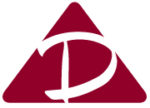Safety Speaker Shares – What Do Statistics Mean To Your Audience?
Safety Speaker John Drebinger Shares – What Do Statistics Mean To Your Audience
How often do you or the leadership of your company share safety statistics with your employees? As a safety speaker have you ever wondered how effective it is to do so? At a recent presentation, the corporate safety leader took a moment to talk with the employees. Earlier in the meeting, it was shared with the employees that the previous year they had a 1.2 OSHA recordable rate. Dave stood up and asked a question, “If anyone here knows what a 1.2 OSHA recordable rate means, please raise your hand.” He did not allow the safety professional or the plant manager to count. No one raised their hand and he restated the question. As he expected, no one knew what specifically this number meant.
That was a fascinating revelation for me as a safety speaker and a communication expert. Here is a number that is mentioned at most annual safety meetings. It would be a shock to most leaders or safety team members that the average person does not know what this means. If they don’t know what it means sharing it has limited impact. I know people know if they have had a better year than last year when you compare two numbers.
He did point out that looking at last year’s numbers no matter what they were or what they meant is not the way to achieve safety success. He used the illustration you never drive somewhere using your rear view mirror as your only navigation tool.
To make his point he referred to a Philadelphia sports team and asked a great question, “Assuming this year your favorite team had a total winning season. If you had $200 to bet on or against that team, what data would you use to make your bet? Would you use last year’s record to decide your bet?” The answer from the audience was a clear, NO. People then answered, they would want to know who the returning players would be. What was the injury status of the next year’s team members? Who had been drafted as new players?
He then pointed out it was the same in safety. Last year’s safety record is not a predictor for next year’s safety performance. The best way to improve this year’s safety performance is to be pro-active as opposed to re-active. He then listed behaviors such as watching out for each other, which help improve safety. That is exactly why they had me teaching their employees my, Would You Watch Out For My Safety?® techniques. They know when you get everyone watching out for others on and off the job you will see improved safety performance.
It is important to note one of the key things I teach is how to share a safety concern or hazard with someone in a way that is comfortable for both parties. People will do behaviors that are comfortable. I also cover how to respond when someone cares enough about your safety to say something. For more information Call 209-745-9419 or go to: www.drebinger.com






